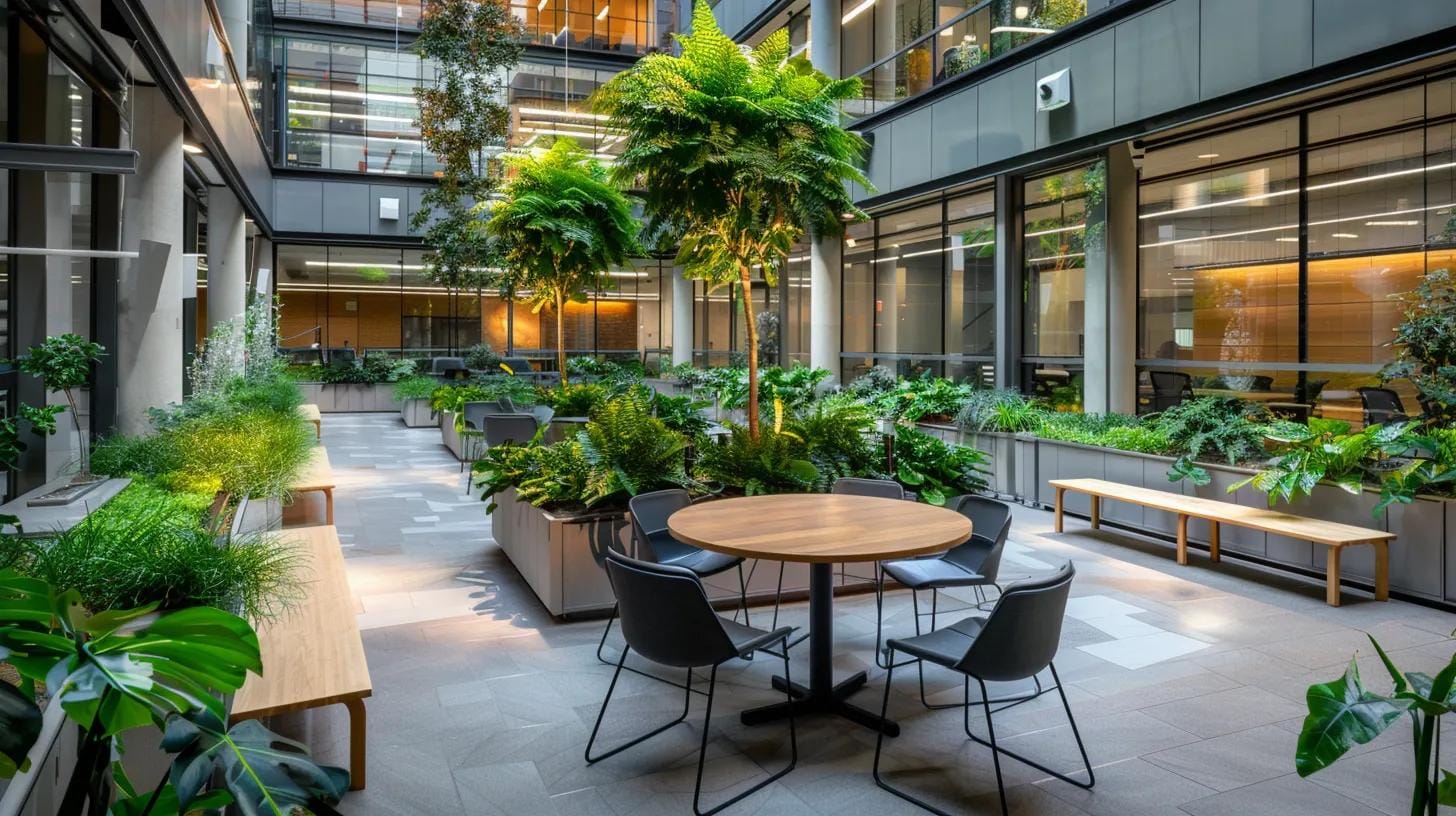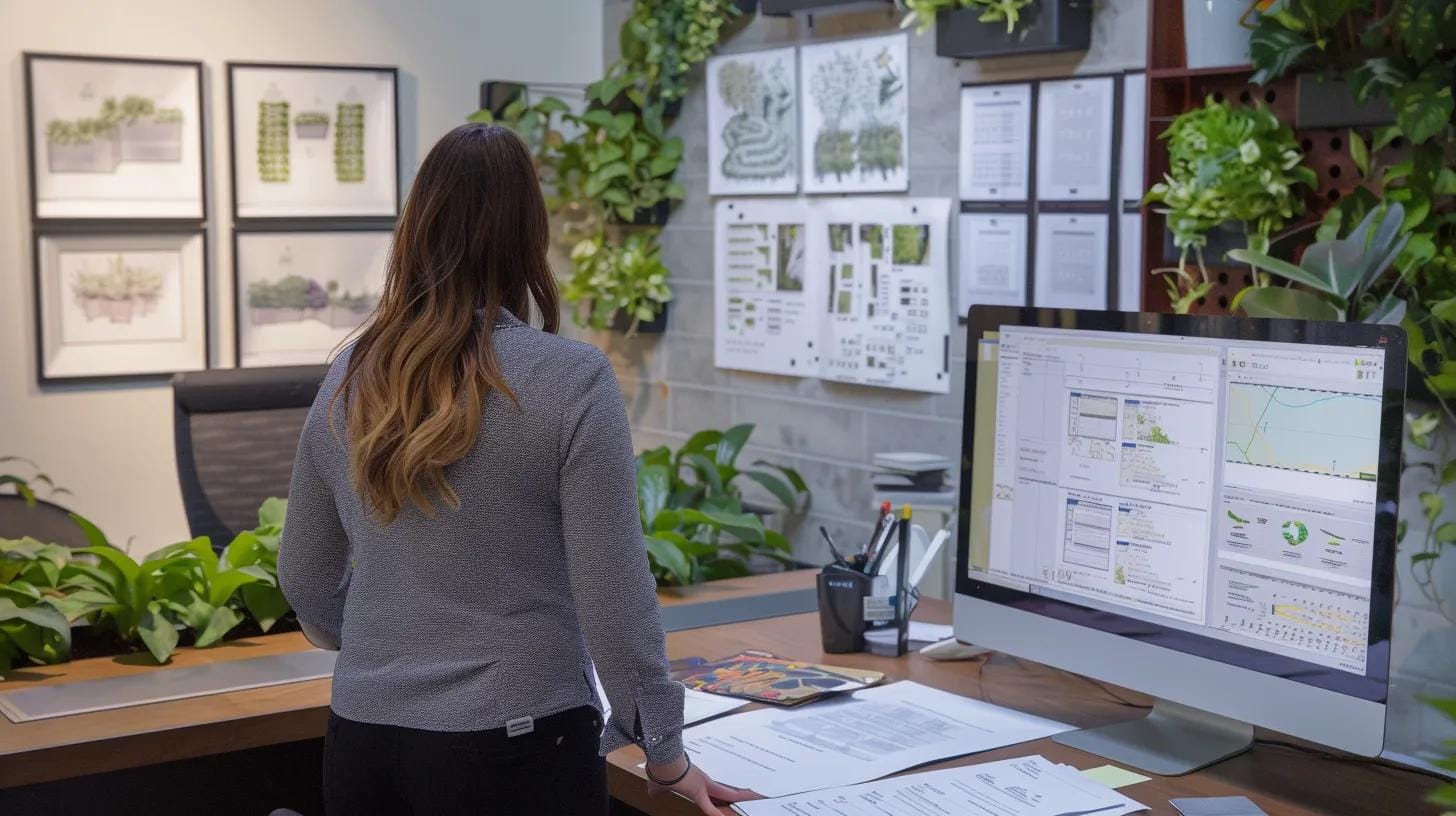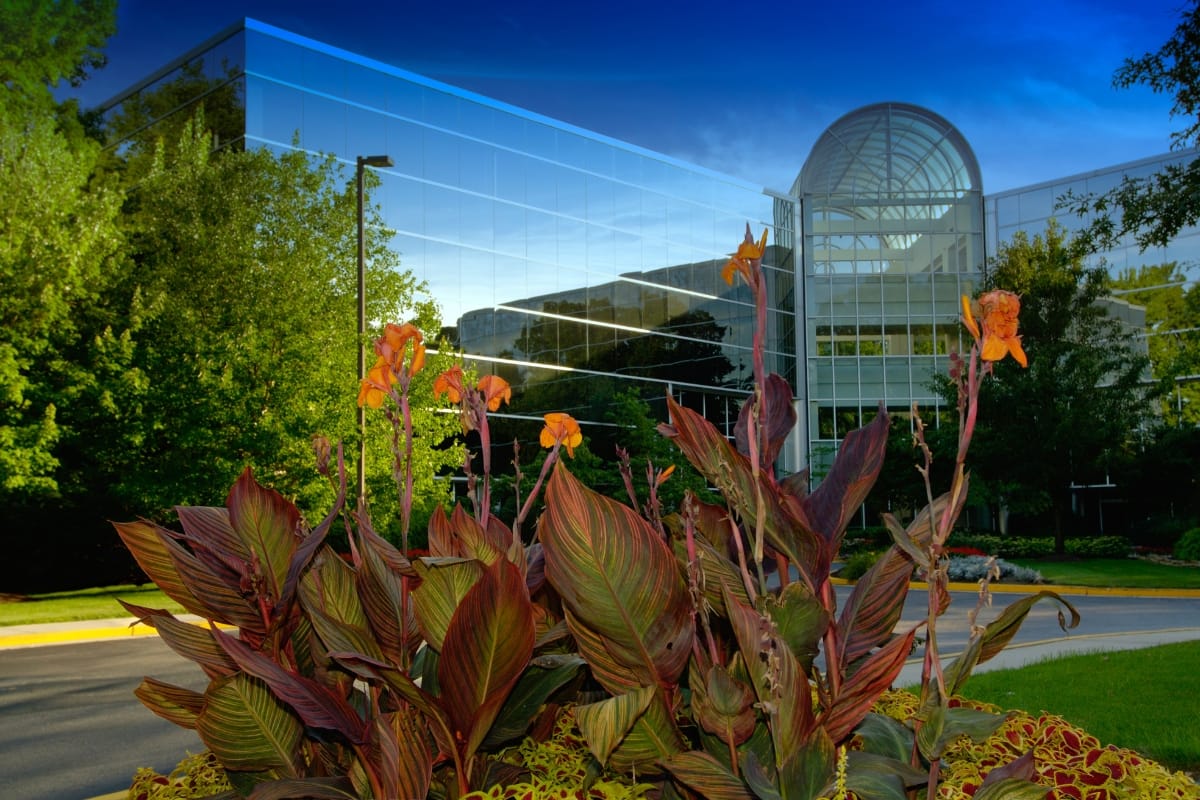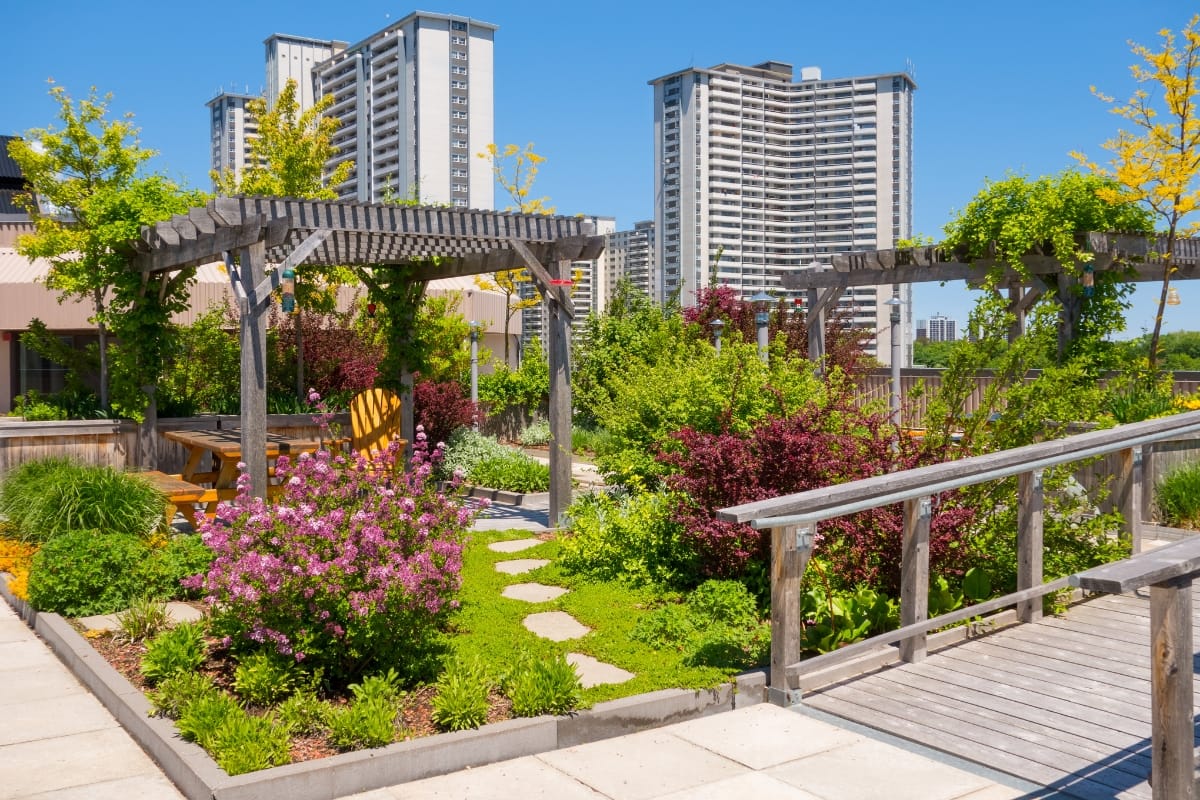First impressions matter—especially in business. In Kennesaw, commercial landscaping plays a pivotal role in shaping how clients, customers, and employees perceive a company the moment they arrive. A well-maintained, thoughtfully designed landscape not only enhances curb appeal but also signals professionalism, care, and attention to detail. From lush green lawns to inviting walkways and seasonal plantings, strategic landscaping can foster a welcoming environment that boosts foot traffic and supports a positive brand image. In this article, we’ll explore how commercial landscaping in Kennesaw contributes to creating a more inviting and successful business space.
Boost Business Presence with Kennesaw Commercial Landscaping
How Commercial Landscaping Enhances Kennesaw's Business Appeal

In a competitive business environment like Kennesaw, first impressions matter. Commercial landscaping plays a critical role in shaping how customers perceive a business. A well-maintained exterior not only reflects professionalism but also helps attract foot traffic by making the property more visually appealing and inviting.
Curb appeal goes beyond just keeping the grass trimmed. A thoughtfully landscaped commercial property incorporates a range of elements, from seasonal flowers and trees to clean walkways and well-defined edges. When everything is well-coordinated, the space communicates that the business pays attention to detail, which customers often associate with reliable service and strong management.
What Landscaping Elements Boost Curb Appeal for Businesses?
Strategic use of landscaping features like colorful flower beds, low-maintenance shrubs, and ornamental grasses can brighten the front of any building. Paired with consistent upkeep, such as pruning and mulching, these elements give the property a tidy and professional appearance year-round. Hardscape features, including paved walkways, retaining walls, and stone borders, add structure to the space while improving functionality. Lighting and other finishing touches can further enhance the overall design, especially for businesses that operate into the evening.
In addition to aesthetics, smart landscaping choices can improve long-term sustainability. Drought-resistant plants and efficient irrigation systems help reduce water usage while maintaining a lush appearance. In areas prone to heavy rainfall, features like dry wells and rain gardens help manage water flow and prevent erosion, preserving the integrity of both the landscape and surrounding structures.
Impact on Customer Perception
Customers often make judgments about a business before ever stepping inside. A poorly maintained exterior may signal neglect, while a well-landscaped property conveys care, stability, and attention to detail. This perception directly affects a customer’s willingness to enter the business and even their likelihood of returning.
Businesses with clean, organized outdoor spaces are seen as more trustworthy and established. Landscaping can also help reinforce brand identity. For example, a medical office may favor a clean, minimalist design, while a boutique might opt for colorful, whimsical landscaping to match its interior atmosphere. Either way, a property that looks well cared for builds confidence and encourages engagement.
Choosing the Right Plants and Materials for Kennesaw’s Climate
Selecting the right plants for the local environment is essential. In Kennesaw, options like ornamental grasses, native shrubs, and Southern Red Oaks tend to perform well with less maintenance. These choices are not only hardy but also offer visual interest throughout the seasons. Ground cover, mulch, and properly graded soil help maintain soil health and reduce runoff.
Hardscaping features such as stone pathways, seating areas, or small fire features can transform ordinary spaces into attractive gathering points. Using locally sourced materials and sustainable design practices also ensures the landscape will be durable and well suited to the region’s weather conditions.
How Can Commercial Landscaping Improve Employee Well-Being and Productivity?

A thoughtfully designed outdoor space can do more than enhance the look of a workplace—it can positively impact employee morale and overall productivity. Incorporating green areas into a commercial property provides employees with access to fresh air, natural surroundings, and opportunities to recharge during the day. These features are especially valuable in high-stress environments where even a short break in a peaceful setting can improve focus and reduce mental fatigue.
Workplaces that invest in landscaping improvements often see a change in how employees interact with the environment. Open-air spaces with trees, greenery, and shaded seating encourage people to step outside, stretch their legs, or engage in informal conversations. These micro-breaks help prevent burnout and allow staff to return to their work with improved clarity and energy. Even small upgrades like planting native trees or creating a walking path can help foster a healthier workplace culture.
The Value of Green Spaces on Employee Morale
Access to well-maintained outdoor areas can give employees a mental reset in the middle of a busy day. Having a space to step outside, even for a few minutes, has been shown to reduce stress and support mental well-being. Landscaping elements like clean, open lawns, shaded benches, or thoughtfully arranged plants create an atmosphere that feels calm and inviting. These green spaces can be used for informal meetings, solo breaks, or even small team gatherings.
In many office settings, outdoor break areas have become an extension of the workplace itself. When employees feel their environment supports their comfort and well-being, they tend to be more engaged and satisfied with their jobs. This has long-term effects on retention and productivity.
Why Outdoor Break Areas Matter
Break areas located outside give employees a change of scenery without leaving the workplace. These spaces can help increase movement, encourage social interaction, and offer a different setting for brainstorming or collaboration. When designed with comfort in mind—such as with level ground, durable surfaces, and good drainage—they provide year-round usability. The inclusion of elements like shaded seating, pathways, or simple natural features adds both function and visual appeal. Even low-maintenance additions like artificial turf or fire pits can increase usage, turning underutilized space into a valuable amenity.
Supporting Health Through Sustainable Landscaping
Landscaping that incorporates sustainable practices contributes to both employee health and environmental responsibility. Using native plants reduces water consumption and maintenance needs, while eco-friendly materials help preserve soil and air quality. Features like rain gardens or proper site grading improve water management and create safer outdoor spaces after heavy rainfall. When businesses prioritize outdoor environments that are clean, accessible, and thoughtfully designed, they invest in more than appearances. They support a healthier, more productive workplace where employees feel valued and inspired.
What Financial Benefits Does Commercial Landscaping Provide for Kennesaw Businesses?

Landscaping plays a more important role in business success than many realize. While a visually appealing exterior makes a strong impression, it also provides measurable financial advantages. In Kennesaw’s competitive market, where first impressions often influence customer behavior, investing in high-quality outdoor environments can significantly impact a business’s bottom line.
Well-executed landscaping helps attract attention, build trust, and create a more professional image. Businesses with clean, green, and well-maintained outdoor areas are more likely to draw in new customers and retain existing ones. This is especially important in retail, hospitality, and office settings, where curb appeal can influence walk-in traffic or leasing decisions. A neat, functional landscape can turn a basic storefront into a more inviting destination.
How Landscaping Affects Property Value
Attractive landscaping is one of the most cost-effective ways to raise the value of a commercial property. Industry research consistently shows that properties with appealing exterior features can command higher prices and attract premium tenants. Simple elements like trimmed lawns, fresh mulch, or clean pathways improve the visual appeal and send a message of care and attention to detail.
Beyond appearances, landscaping projects that incorporate thoughtful design and durable materials add long-term value. Proper drainage, use of drought-tolerant plants, and efficient layouts reduce the need for frequent repairs or costly changes. When these elements are planned well from the start, they improve both short-term usability and long-term profitability.
Return on Investment (ROI) for Commercial Landscaping
Investing in landscaping can yield substantial returns. Studies estimate that for every dollar spent, businesses can see up to $14 in increased value over time. This return comes from multiple factors, including increased customer interest, higher tenant retention, and lower maintenance or energy costs. Strategic choices such as low-maintenance turf alternatives or integrated lighting can lead to noticeable savings while enhancing the property’s appearance.
Efficient landscape design can also reduce utility bills. Incorporating water-saving features like rain gardens or smart irrigation systems cuts down on waste and can lower costs throughout the year. For businesses that operate in areas with water restrictions or unpredictable weather, this becomes both a financial and practical advantage.
The Importance of Ongoing Maintenance
Maintaining a landscape is just as important as the initial installation. Routine upkeep prevents small problems from becoming costly repairs. Regular cleanups, seasonal plant updates, and basic care for lawns and hardscape features preserve the investment and keep the property looking its best. Neglected areas can quickly affect a business’s reputation, while well-maintained grounds build trust with customers and visitors.
What Are the Key Kennesaw-Specific Considerations for Commercial Landscaping?

Creating effective commercial landscaping in Kennesaw requires an understanding of the area’s environmental conditions and local ordinances. From plant selection to water management, successful landscape planning depends on making smart, regionally informed decisions that prioritize durability, efficiency, and appearance.
Adapting to Kennesaw’s Climate
Kennesaw experiences hot, humid summers and relatively mild winters. This makes drought tolerance a key factor in choosing plants and building landscape systems. Designs must account for seasonal rainfall and potential periods of drought. Proper grading is critical to direct water away from structures and prevent erosion. In areas prone to pooling or excess runoff, drainage features such as dry wells and rain gardens help reduce flooding and protect soil stability.
Many commercial properties benefit from using ground covers like mulch to retain soil moisture and keep plant roots cool during summer heat. Artificial turf can also be a practical alternative in high-traffic areas where regular maintenance and irrigation would be costly. These features not only improve resilience but also reduce long-term upkeep needs.
Selecting Plants That Work in Kennesaw
Native and climate-adapted plants offer strong performance in Kennesaw landscapes. Species such as beautyberry, black-eyed Susan, blue mist spirea, and ornamental grasses provide seasonal interest while withstanding local weather patterns. These plants typically require less water and are more resistant to pests and diseases compared to non-native varieties. Using native vegetation also helps businesses align with sustainability goals and city guidelines. Incorporating plants that thrive in local conditions reduces reliance on chemical treatments and irrigation, while still delivering color, texture, and curb appeal.
The Role of Local Regulations
Businesses in Kennesaw must follow city and county landscaping codes that often include requirements for water efficiency, native plant use, and stormwater management. New commercial developments may be asked to include certain landscape elements like buffer zones, tree preservation, or green infrastructure. Features such as permeable pavers, rain gardens, and drip irrigation systems are encouraged in many projects. These elements help meet regulatory benchmarks while improving landscape function. Staying compliant with these rules is essential, not only to avoid penalties but also to ensure that the landscaping remains practical and environmentally responsible over time.
Combining Design and Functionality
Successful landscaping balances form and function. While curb appeal plays a major role in attracting customers and improving brand perception, the layout must also support everyday use. Seating areas, shaded walkways, and open green zones can make outdoor spaces more usable for staff and visitors.
Hardscape features such as low retaining walls, paved paths, and fire elements help define areas within the landscape, while smart use of lighting improves visibility and safety. When all elements are tailored to local conditions and properly maintained, the result is a landscape that stands up to weather, serves business needs, and supports long-term investment.
What Are the Most Common Questions About Commercial Landscaping in Kennesaw?

Business owners in Kennesaw often have questions about commercial landscaping. Topics like cost, maintenance, plant choices, and return on investment are frequently discussed as companies weigh the benefits of improving their outdoor spaces. Whether a business is trying to increase foot traffic or create a more inviting atmosphere for employees, landscaping can play a significant role in overall success.
How Much Does Commercial Landscaping Cost in Kennesaw?
The cost of commercial landscaping depends on several factors, including the size of the property, the scope of the design, and the materials used. Projects that involve reshaping the land or installing features like drainage systems, retaining walls, or turf alternatives will typically fall on the higher end of the scale. Basic upgrades such as planting native shrubs, adding mulch, or clearing overgrowth may require a smaller investment.
While the upfront cost of landscaping can range from a few thousand dollars to significantly more for complex layouts, many property owners view it as a long-term investment. Well-maintained landscapes often lead to better curb appeal, higher property values, and lower maintenance costs over time. Investing in smart design and functional upgrades like proper grading or efficient irrigation can also reduce the likelihood of future problems.
How Often Should a Commercial Landscape Be Maintained?
Landscape maintenance needs vary depending on the plant materials, season, and level of detail in the original design. In most cases, commercial properties benefit from scheduled visits every two to four weeks. These visits typically involve mowing, trimming, debris removal, weeding, and basic plant care. Mulching may be done seasonally to suppress weeds and improve moisture retention.
In addition to these tasks, some properties may require occasional regrading or drainage system checks to keep everything functioning as intended. Landscapes that include water features, lighting, or complex plant beds may require more frequent attention to stay in good condition throughout the year. The key is consistency. A regular schedule helps prevent larger problems from developing and ensures the outdoor space always reflects well on the business.
Which Plants Work Best for Commercial Landscapes in Kennesaw?
When choosing plants for commercial properties, it’s important to consider both aesthetics and long-term care. Native plants are often the best choice because they are already adapted to the local climate and require less water and maintenance than non-native species. In Kennesaw, popular options include drought-tolerant grasses, evergreens, flowering perennials, and low-maintenance shrubs like Indian hawthorn.
These plants offer year-round visual interest without the need for constant pruning or irrigation. Pairing them with proper soil preparation and mulching helps maintain healthy growth and improves the overall appearance of the landscape. Businesses can also benefit from incorporating seasonal color rotations to keep things fresh and inviting for returning customers.
Can Landscaping Actually Help Attract More Customers?
Yes, well-executed landscaping can have a direct impact on customer perception and behavior. The exterior of a business is often the first thing people see. If the landscape looks neglected, potential customers may question the quality of the service or product inside. On the other hand, a clean, organized, and inviting outdoor space signals attention to detail and professionalism.
Elements like shade trees, flower beds, clear pathways, and strategically placed seating all contribute to a positive experience. Even small upgrades, like fresh mulch or improved lighting, can make a noticeable difference. In competitive markets like Kennesaw, where many businesses are vying for attention, standing out visually matters. A well-maintained landscape builds credibility and encourages customers to spend more time on the property.
What Other Benefits Come from Investing in Landscaping?
In addition to improving appearance and drawing in customers, landscaping can support environmental goals and workplace satisfaction. Properly designed outdoor areas help manage stormwater runoff, reduce heat buildup, and improve air quality. For businesses with on-site staff, outdoor spaces also provide opportunities for breaks, informal meetings, or simply a change of scenery, which can help boost morale and productivity.
How Can Businesses Maximize the Impact of Commercial Landscaping Through Design and Hardscaping?

Commercial landscaping is about more than making a property look good. When thoughtfully planned, it becomes part of a business’s strategy to improve curb appeal, guide foot traffic, and reduce long-term maintenance. Integrating strong design with practical hardscaping features helps businesses in places like Kennesaw stand out visually while improving the day-to-day functionality of outdoor areas.
A well-balanced landscape incorporates greenery, hard materials like stone and concrete, and support systems that keep everything running smoothly. Done right, landscaping not only improves how a space looks but also how people move through and interact with it. Whether it’s a clean-lined entryway or a shaded courtyard, the goal is to make each part of the exterior serve a clear purpose while contributing to the overall experience.
Understanding the Commercial Landscape Design Process
Commercial landscape design typically starts with a thorough review of the site. This includes evaluating soil quality, drainage needs, grading challenges, and how the space is currently being used. Designers look at these factors in relation to the building’s style and the business’s goals for the space.
After the initial assessment, the team develops a concept that outlines plant choices, layout options, and potential hardscape features such as walkways, walls, and lighting. This stage often involves exploring how elements like rain gardens or shaded seating might fit into the design. Once a direction is chosen, the concept is turned into detailed plans that map out everything from plant locations to installation timelines. By the time work begins, each piece of the project is clearly defined and coordinated, helping to avoid delays or budget issues.
Hardscaping Features That Improve Entryways and Walkways
A strong first impression starts at the entrance. In commercial settings, walkways, steps, and entry features should direct people naturally toward the door without confusion. Decorative pavers can provide a clean, uniform look while being durable enough for heavy foot traffic. Retaining walls can help shape sloped areas or define borders, while also serving as a canvas for planting or lighting accents.
Lighting is another important detail. Low-profile fixtures along walkways not only improve safety but also draw attention to architectural details or landscape features. In some spaces, including outdoor benches or water features can encourage visitors to pause and engage with the space, which adds to the property’s appeal.
Making Irrigation More Efficient
Water use is one of the biggest ongoing costs in commercial landscaping. That’s why an efficient irrigation system matters. Instead of using one-size-fits-all sprinkler setups, modern systems rely on sensors and timers that respond to soil conditions and weather. For example, if it rains overnight, the system adjusts automatically to avoid unnecessary watering.
Drip irrigation systems are especially useful in planted areas, delivering water directly to the base of each plant. This minimizes waste and supports healthier growth by avoiding water on leaves or walkways. When combined with smart controllers, these systems reduce water usage and make it easier to manage landscapes through seasonal changes. Over time, they help reduce utility bills while keeping the grounds looking consistent and well-maintained.
Designing for Longevity and Low Maintenance
Sustainability and maintenance go hand in hand. Commercial landscapes that include native plants and drought-resistant species are easier to care for and adapt better to Kennesaw’s weather patterns. These plants usually need less water and fewer chemical treatments, which cuts down on both labor and material costs.
The use of permeable pavers and strategic grading also plays a part in controlling stormwater runoff, which protects both the property and the environment. Features like rain gardens or dry wells manage excess water naturally, reducing the risk of pooling or erosion around structures. Over time, these design decisions help avoid damage to hardscapes and lower the frequency of repairs.
Blending Style with Function
When hardscaping and landscape design are coordinated from the start, the result is a space that feels intentional and easy to maintain. Pathways connect logically to entrances. Seating areas are shaded and positioned for comfort. Lighting supports both visibility and mood. And plantings provide color and texture without creating extra upkeep.
Frequently Asked Questions
Q: What are the primary financial benefits of investing in commercial landscaping in Kennesaw? A: The benefits include increased property values (up to 15%), improved customer traffic leading to higher sales, and an impressive ROI where every dollar spent can yield between 7 and 14 dollars. Enhanced aesthetics also lessen the need for costly repairs.
Q: How often should businesses schedule maintenance for their commercial landscaping? A: Most landscapes require maintenance every two to four weeks, with adjustments as needed for seasonal changes. Regular upkeep helps preserve plant health and optimal operation of irrigation and hardscape elements.
Q: Which native plants are recommended for commercial landscaping in Kennesaw? A: Recommended plants include Southern Red Oak, Blue Mist Spirea, American Beautyberry, and various ornamental grasses. These species thrive in the local climate, require less water, and support sustainable practices while enhancing visual appeal.
Q: What hardscaping elements are most effective in enhancing a business’s entrance? A: Key hardscaping elements include decorative pavers, custom retaining walls, integrated outdoor lighting, and water features. These features not only boost aesthetics but also guide customers safely and effectively into the business.
Q: How do sustainable practices in landscaping contribute to long-term cost savings? A: Using native plants, efficient irrigation, and eco-friendly materials reduces maintenance and energy costs over time. These sustainable approaches lower water usage and delay major reinvestments, yielding measurable savings.
Q: Can commercial landscaping improve employee productivity? A: Yes, incorporating green spaces and outdoor break areas reduces stress, enhances mental clarity, and fosters creative problem-solving, leading to improved productivity.
Q: What local regulations should businesses in Kennesaw consider when planning a commercial landscape? A: Key considerations include water conservation regulations, mandatory use of native plants, and zoning laws governing outdoor structures and chemical applications. Compliance with these standards ensures legal and environmental responsibility.
Final Thoughts
A thoughtfully designed landscape is more than just greenery—it’s the first impression your business makes on every visitor. From vibrant planting beds to crisp walkways and inviting seating areas, commercial landscaping in Kennesaw sets the tone for professionalism and care, putting clients and employees at ease the moment they arrive. If you’re ready to transform your property into a welcoming oasis that reflects the quality of your business, trust Glover Landscapes to bring your vision to life. Call us today at (404) 510-6437 or visit our website to request your free project estimate and take the first step toward a more inviting business environment.


